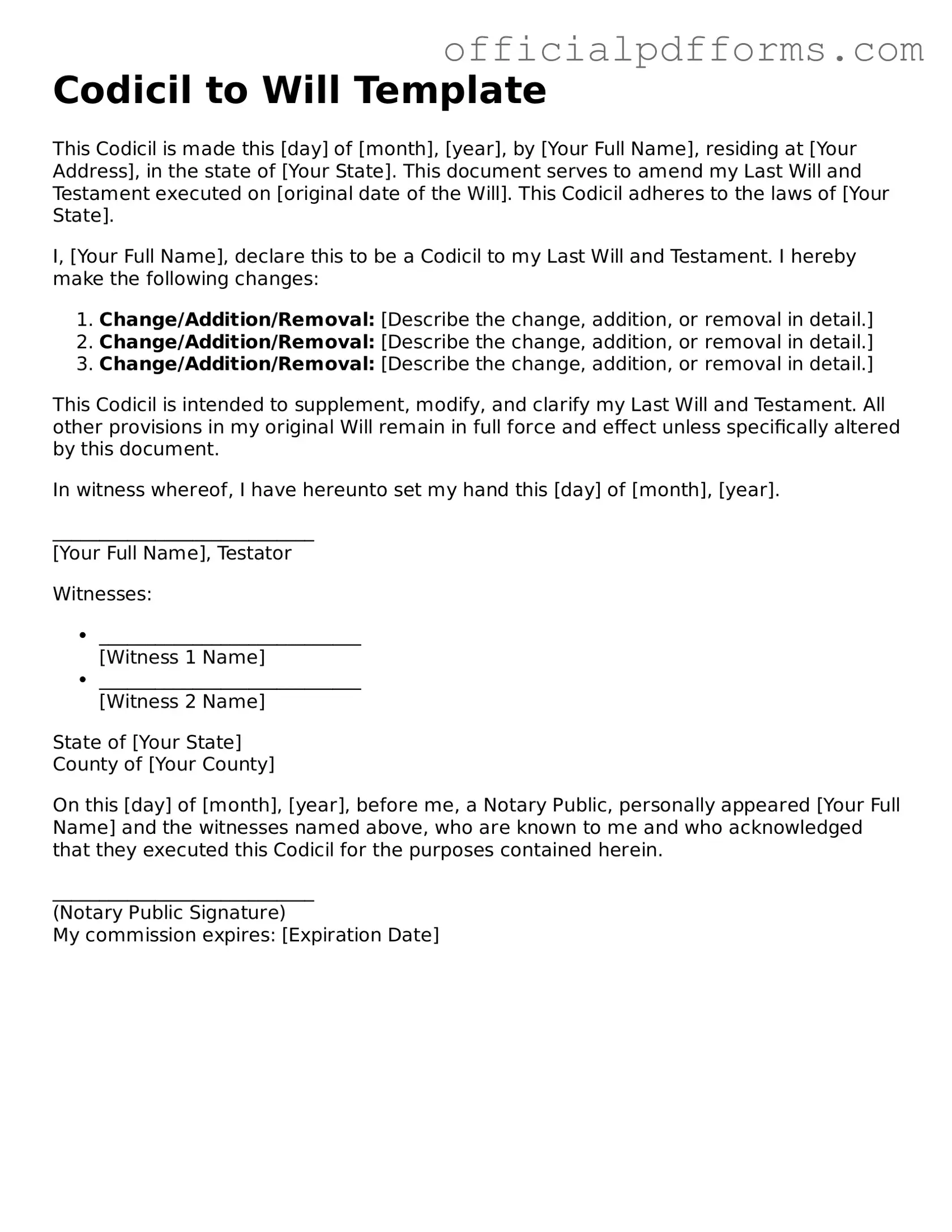What is a Codicil to Will?
A codicil is a legal document that allows you to make changes to your existing will without having to create an entirely new one. This can include adding new beneficiaries, changing how assets are distributed, or revoking certain provisions. A codicil must be signed and witnessed, just like a will, to be considered valid.
When should I use a Codicil instead of creating a new Will?
Using a codicil can be beneficial when you need to make minor adjustments to your will. If the changes are significant, such as altering the primary beneficiaries or substantially changing the distribution of assets, it may be more appropriate to draft a new will. Consider using a codicil when:
-
You want to add a new beneficiary.
-
You wish to change an existing beneficiary’s share.
-
You need to update your executor or guardian information.
How do I create a Codicil to my Will?
Creating a codicil involves a few straightforward steps:
-
Clearly state that the document is a codicil to your existing will.
-
Reference your original will by its date and any relevant details.
-
Outline the specific changes you wish to make.
-
Sign the codicil in the presence of witnesses, if required by your state law.
Ensure that you keep the codicil with your original will to avoid confusion.
Do I need a lawyer to create a Codicil?
While it is not legally required to have a lawyer draft a codicil, consulting with one can provide peace of mind. A legal professional can ensure that the document meets all state requirements and accurately reflects your intentions. If your changes are complex or involve significant assets, legal assistance is advisable.
Can I revoke a Codicil?
Yes, you can revoke a codicil at any time. This can be done by creating a new codicil that explicitly states the revocation or by destroying the original codicil. If you revoke a codicil, ensure that your will remains clear and that any changes you wish to keep are documented properly.
